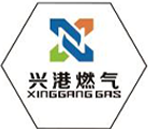
Nov . 24, 2024 23:00
Back to list
Gas Pressure Regulator Valve and Its Importance in Gas Systems
Understanding Gas Pressure Regulators Essential Components in Gas Systems
Gas pressure regulators are crucial devices used in various applications, ranging from residential heating systems to industrial processes. Their primary function is to control and maintain the pressure of gas, ensuring a steady and safe flow. This article explores the significance, functioning, and applications of gas pressure regulators, shedding light on why they are indispensable in gas management systems.
What is a Gas Pressure Regulator?
A gas pressure regulator is a mechanical device designed to reduce the pressure of gas from a high-pressure source to a lower, more manageable pressure. It acts as a control valve that automatically adjusts the flow of gas to maintain a predetermined outlet pressure, regardless of fluctuations in upstream pressure or the flow rate demand.
The design of a gas pressure regulator typically includes a spring-loaded diaphragm mechanism that responds to changes in pressure. When the gas pressure rises above the set point, the diaphragm moves to close the valve, thereby reducing the flow. Conversely, if the pressure drops below the set point, the diaphragm allows more gas to flow through, maintaining a consistent outlet pressure.
Applications of Gas Pressure Regulators
1. Residential Use In residential settings, gas pressure regulators are commonly found in natural gas lines supplying appliances such as stoves, water heaters, and furnaces. They ensure that the gas delivered to these devices is within a safe and efficient operational range, preventing potential hazards such as explosions or inefficient fuel consumption.
2. Industrial Applications In industrial settings, gas pressure regulators play a vital role in processes involving combustion or gas feedstock for various operations. They are used in power plants, manufacturing, and chemical processing, where precise gas delivery pressure is critical to overall operational efficiency and safety.
.
4. Automotive Industries In the automotive sector, pressure regulators are used in fuel systems to maintain the appropriate fuel pressure for optimal engine performance. They help regulate the fuel flow to the engine and ensure that it operates efficiently under various conditions.
صمام منظم ضغط الغاز

Importance of Proper Regulation
The importance of gas pressure regulators cannot be overstated. If gas pressures are not adequately regulated, it can lead to dangerous situations, including gas leaks, explosions, or equipment failure. Proper regulation ensures the efficient functioning of appliances and equipment, contributing to energy savings and extending the lifespan of devices.
Moreover, excessive pressure can damage sensitive equipment, leading to costly repairs or replacements. For instance, in industrial settings, machinery may be designed to operate at specific pressures, and deviations can result in production inefficiencies or safety hazards. By maintaining stable pressure levels, regulators help in achieving optimal performance across various systems.
Types of Gas Pressure Regulators
There are various types of gas pressure regulators designed to meet specific needs
- Single-stage Regulators These are used where a constant outlet pressure is required and a minor fluctuation in input pressure is acceptable.
- Two-stage Regulators These regulators are used when precise control of pressure is necessary. They reduce high inlet pressure to an intermediate level in the first stage and then to the desired lower pressure in the second stage, providing greater stability.
- Back-pressure Regulators Used primarily in process industries, these regulators control the pressure in a system by releasing excess gas to upstream components when the pressure exceeds a predetermined limit.
Conclusion
In conclusion, gas pressure regulators are fundamental components in a wide array of applications, ensuring safety, efficiency, and reliability in gas delivery systems. Their ability to adapt to pressure variations makes them invaluable in maintaining stable operational parameters, whether in home appliances, industrial processes, or medical settings. As technology advances, the design and functionality of gas pressure regulators continue to evolve, promising enhanced safety features and efficiency metrics, crucial for the future of gas management. Understanding their role is essential for anyone involved in gas applications, ensuring that systems operate smoothly and safely.
Latest news
-
Safety Valve Spring-Loaded Design Overpressure ProtectionNewsJul.25,2025
-
Precision Voltage Regulator AC5 Accuracy Grade PerformanceNewsJul.25,2025
-
Natural Gas Pressure Regulating Skid Industrial Pipeline ApplicationsNewsJul.25,2025
-
Natural Gas Filter Stainless Steel Mesh Element DesignNewsJul.25,2025
-
Gas Pressure Regulator Valve Direct-Acting Spring-Loaded DesignNewsJul.25,2025
-
Decompression Equipment Multi-Stage Heat Exchange System DesignNewsJul.25,2025

